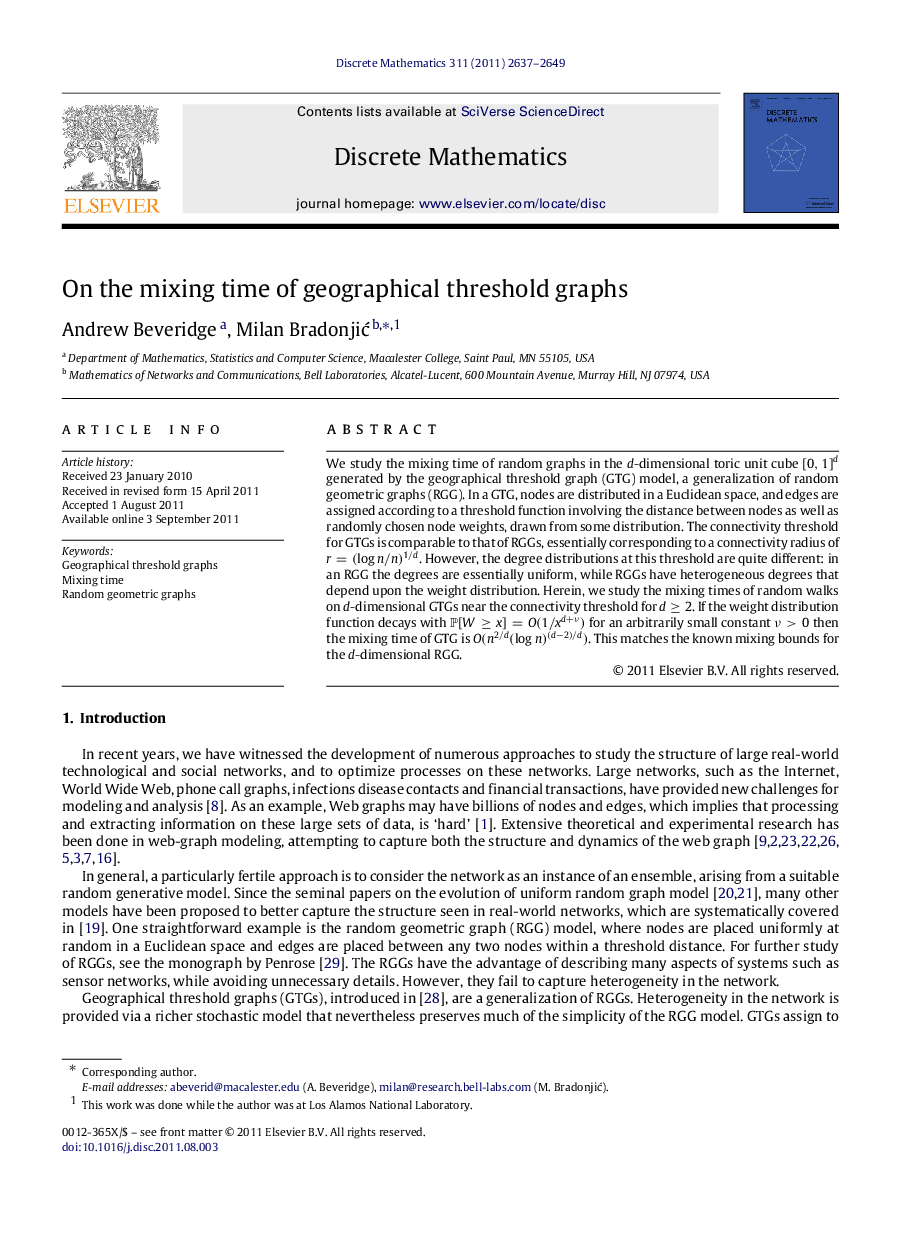| Article ID | Journal | Published Year | Pages | File Type |
|---|---|---|---|---|
| 4648475 | Discrete Mathematics | 2011 | 13 Pages |
We study the mixing time of random graphs in the dd-dimensional toric unit cube [0,1]d[0,1]d generated by the geographical threshold graph (GTG) model, a generalization of random geometric graphs (RGG). In a GTG, nodes are distributed in a Euclidean space, and edges are assigned according to a threshold function involving the distance between nodes as well as randomly chosen node weights, drawn from some distribution. The connectivity threshold for GTGs is comparable to that of RGGs, essentially corresponding to a connectivity radius of r=(logn/n)1/dr=(logn/n)1/d. However, the degree distributions at this threshold are quite different: in an RGG the degrees are essentially uniform, while RGGs have heterogeneous degrees that depend upon the weight distribution. Herein, we study the mixing times of random walks on dd-dimensional GTGs near the connectivity threshold for d≥2d≥2. If the weight distribution function decays with P[W≥x]=O(1/xd+ν)P[W≥x]=O(1/xd+ν) for an arbitrarily small constant ν>0ν>0 then the mixing time of GTG is O(n2/d(logn)(d−2)/d)O(n2/d(logn)(d−2)/d). This matches the known mixing bounds for the dd-dimensional RGG.
